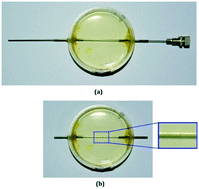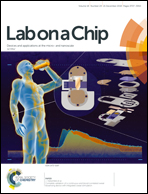Collective dynamics of red blood cells on an in vitro microfluidic platform
Abstract
Understanding the dynamics of blood flow in physiologically relevant confinements turns out to be an outstanding proposition in biomedical research. Despite the large number of studies being reported to theoretically elucidate the dynamics of red blood cells (RBCs) in confined geometries, in vitro experimental studies unveiling the implications of the collective dynamics of red blood cells in physiologically relevant bio-mimetic microfluidic channels remain elusive. Here, we investigate the implications of complex dynamvic interactions between the whole blood and a deformable channel wall fabricated using a hydrogel matrix. For a range of flow rates, we map the trajectories of the RBCs for varying levels of softness of the microchannel wall. We compare these scenarios with the reference cases of rigid polydimethylsiloxane (PDMS) channels. Our results reveal that the smallest channels investigated herein exhibit the most intricate interactions between the collective dynamics of the RBC and the wall flexibility, attributable to confinement-induced hydrodynamic interactions in the presence of spatially varying shear rates. These results may open up new paradigms in conceptual understanding of in vivo dynamics of blood flow through simple in vitro experiments on a simple microfluidic platform.



 Please wait while we load your content...
Please wait while we load your content...